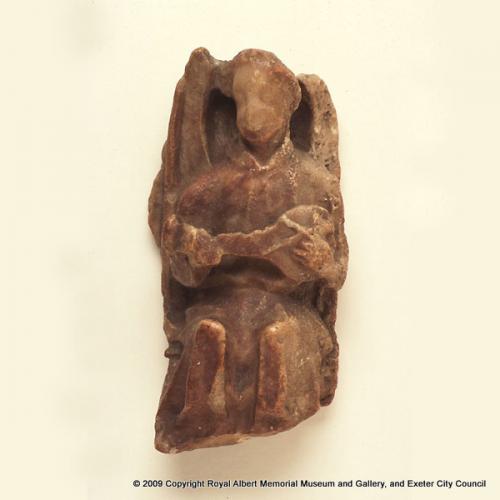An angel in alabaster
Back to Time Period
The small seated angel is carved in alabaster and dates to the 15th century. Plucking a lute with its long delicate fingers, it is a typical example of a peculiarly English craft. Alabaster (sulphate of lime) occurs naturally in NW Europe only in a small area of Nottinghamshire and Derbyshire. Because it is a beautiful material which can easily be carved, it was much prized in the middle ages for sculpture, and 'alabastermen' carved this material in workshops in various northern towns such as Nottingham, York and Lincoln. An important aspect of their work was the creation of retables - the sequences of carved panels placed on altars, telling the life of Christ, the Joys of the Virgin Mary, etc. Our angel certainly comes from such a retable, and probably from one showing the Life of the Virgin Mary. Previously unrecorded, the angel was bought by our museum in 1994. It was in fact found long before - in 1831 - when a box containing many alabaster panels was discovered buried below the floor of Monkerton Farm at Pinhoe. Evidently they were concealed at the Reformation. The whereabouts of the rest of the alabasters is now unknown.
Acknowledgments: RAM Museum



















